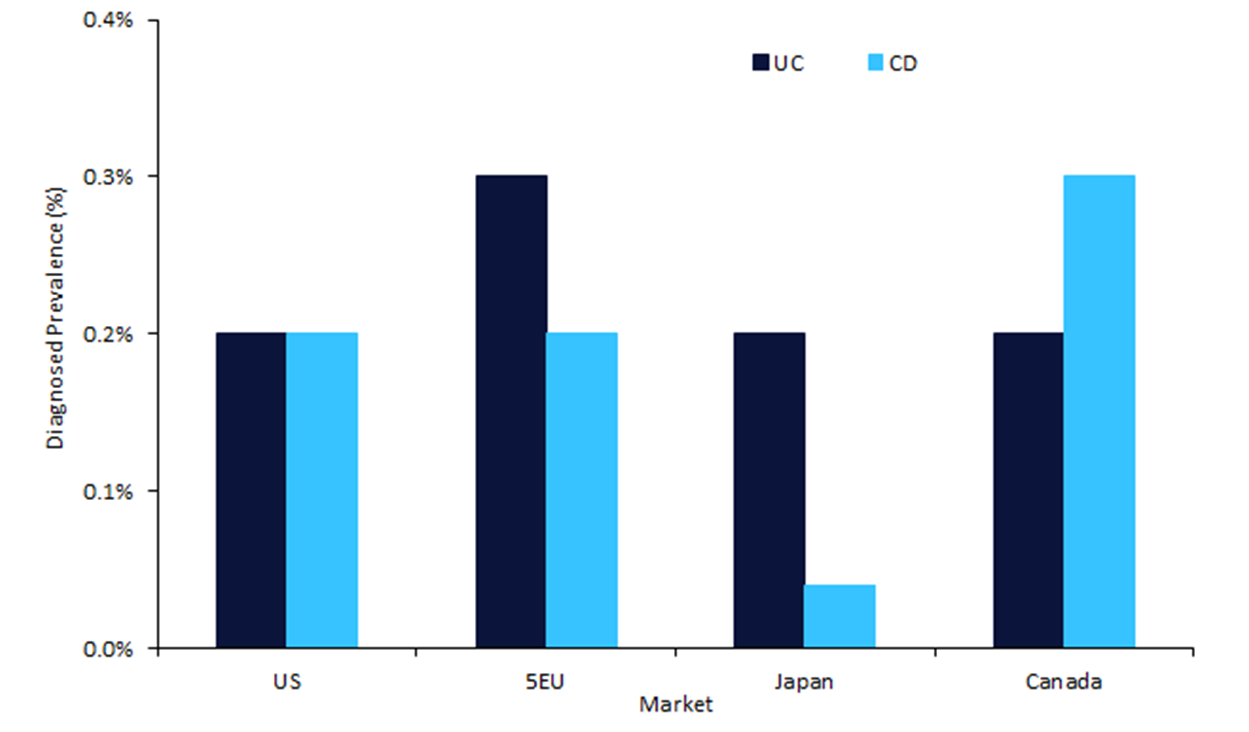Crohn’s disease (CD) and ulcerative colitis (UC) are two forms of inflammatory bowel disease (IBD) that affect millions of people worldwide. Crohn’s and Colitis Awareness Week, which is observed annually from 1 to 7 December, serves as a platform to educate and support individuals living with these diseases. The diagnosed prevalence of CD and UC varies across different markets. These geographic variations may be due to differences in dietary habits, genetics, and environmental factors. According to GlobalData’s epidemiology forecast, the diagnosed prevalent cases of UC are expected to increase from approximately two million cases in 2023 to 2.1 million cases by 2031 while the diagnosed prevalent cases of CD are expected to increase from approximately 1.6 million cases in 2023 to 1.7 million cases by 2032 in the eight major markets (8MM: US, 5EU, Japan, Canada; 5EU: France, Germany, Italy, and Spain). Given the expected increase in cases, understanding the geographic differences between UC and CD will be important for improving healthcare delivery, predicting new patterns and trends in the frequency of disease, and identifying factors that may contribute to the development and progression of UC and CD.
The exact causes of CD and UC are currently unknown. However, research points to an association of several factors such as genetics, smoking, stress, and diet. Historic data on UC and CD prevalence in the US shows that they have been increasing over the past ten years, and this trend is expected to continue. The increase in prevalence is likely driven by increased disease awareness from physicians, leading to an increase in diagnoses, patients being more aware of the symptoms of the diseases, patients seeking medical care (contributing to an increase in diagnoses), and population dynamics such as population growth. Historic data on CD prevalence in Japan also points to an increase in the frequency of the disease over the past decade. Although Japan has seen an increase in the diagnosed prevalence of CD, it is still much lower than that of the US, the five European markets, and Canada (Figure 1, above). However, the increase in diagnosed prevalence in Japan may indicate that younger generations have had more exposure to CD risk factors. A study published in October 2021 in the Japan Medical Association Journal by Mitsuro Chiba and colleagues links the Westernisation of dietary habits in Japan to the increase in IBD.
How well do you really know your competitors?
Access the most comprehensive Company Profiles on the market, powered by GlobalData. Save hours of research. Gain competitive edge.

Thank you!
Your download email will arrive shortly
Not ready to buy yet? Download a free sample
We are confident about the unique quality of our Company Profiles. However, we want you to make the most beneficial decision for your business, so we offer a free sample that you can download by submitting the below form
By GlobalDataRecognising these geographic variations and the reasons behind the increase in the frequency of CD and UC in each market is key to tailoring public health interventions and disease management strategies. Understanding the factors driving changes in diagnosed prevalence rates allows for targeted resource allocation, the development of disease prevention strategies, and the development of market-specific interventions. Further research into the environmental and genetic links to UC and CD will enable healthcare systems to better address the diverse needs of patients and offer better outcomes.










